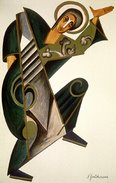Between Monster and Model
FeralChildren.com | Homo ferus: Between Monster and Model
Most studies of human monstrosity, however, found inspiration in the exciting new developments in embryology rather than in the static morphology of Linnaeus' system. They sought to demonstrate that anomalies were biologically reproduced, based on real, material connections, not just on similar appearance or similar traits. Some speculated that feral children were products of incongruous couplings like those that produce mules—perhaps between women and bears or women and apes.[16] While often discredited, accounts of animal-human interbreeding abound in eighteenth-century natural histories and reveal a curiosity mixed with repulsion for hybrids of all kinds. In 1699 Edward Tyson presented an account of a man-pig to the Royal Society; in 1757 Delisle de Sales claimed to have seen a girl with the head and feet of a monkey and records the exhibit of a calf-child and a wolf-child in Lyon in the 1750s; and Maupertuis exhorted the scientific community to experiments that might create new and more beautiful species of humans and animals.[17] Such creatures, and other specimens of physical abnormality, like the "Porcupine Man" and the albino Negro, were fascinating as grotesque carnival attractions and as clues to the mechanism of generation: they provided counter-examples to normal embryological development and fueled debates between advocates of preformationism and epigenesis.[18]
powered by performancing firefox

No comments:
Post a Comment